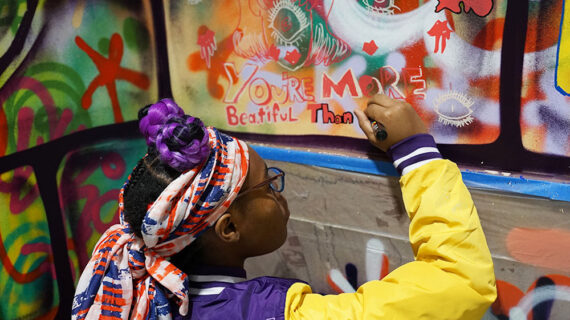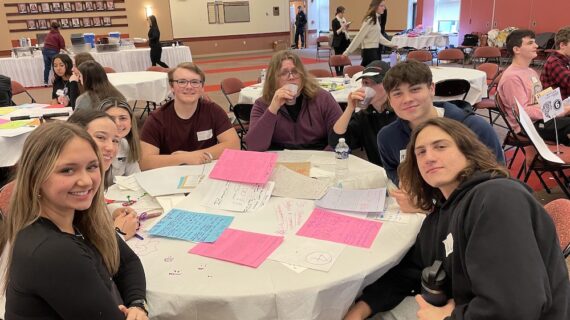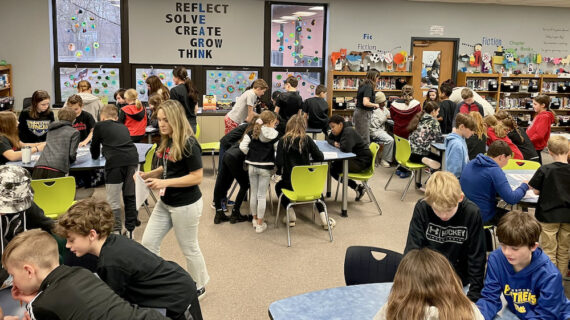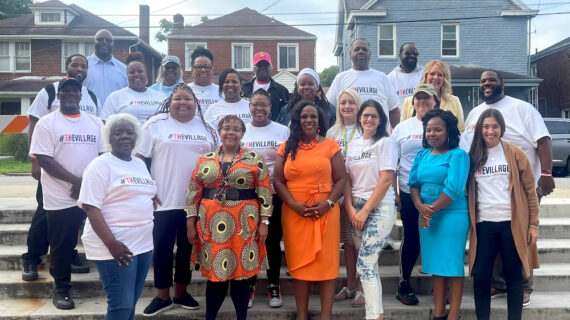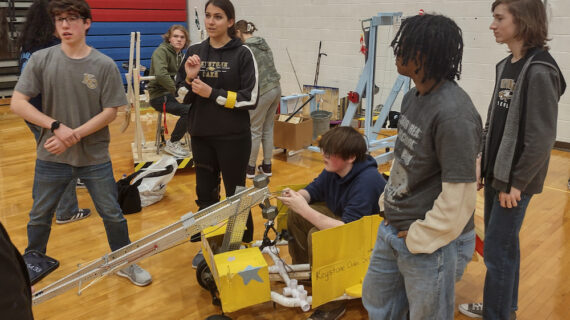
At Deer Lakes, tomorrow’s leaders build 21st-century skills from the moment they enter school
This story is one in a series created in collaboration with the AASA Learning 2025 Alliance to celebrate the work of groundbreaking school districts in the Pittsburgh region. Kidsburgh will share these stories throughout 2024.
The work unfolding in the community of Deer Lakes would look familiar to teachers around the nation. The words being spoken in primary school hallways and high school classrooms — collaboration, creativity, communication, and even “portrait of a graduate” — are bubbling up all over America.
You can understand why: In the 21st century, we can’t educate our kids by simply ensuring they memorize data and can parrot it back when needed. Today’s students need to develop and use the skills and habits that will help them thrive in a world that’s changing at stunning speed.
But at Deer Lakes, “portrait of a graduate” is much more than a trending topic. In fact, they’ve adjusted the term to reflect its true purpose. In this school district north of Pittsburgh, they’ve crafted a “portrait of a learner,” because they believe the work of instilling these skills begins more than a decade before graduation day approaches.
“When we first started this process, I was worried that this could be something we would make nice posters about, but that essentially what we had done would sit on a shelf and wouldn’t get used,” says Deer Lakes Middle School Principal Samantha Abate. “So we had conversations about that. How are we going to implement it and make it useful?”

INPUT FROM ALL CORNERS
Deer Lakes is part of the Western Pennsylvania Learning 2025 Alliance, a regional cohort of school districts working together — with support from The Grable Foundation — to create student-centered, equity-focused, future-driven schools. Led by local superintendents and AASA, The School Superintendents Association, the Alliance convenes to help districts like Deer Lakes do what they do best: help every child thrive.
So Superintendent Janell Logue-Belden and her team were able to discuss the portrait creation process with folks from other districts in the region. Grant funding from The Grable Foundation also enabled the district to partner with the Learner-Centered Collaborative, a nonprofit that helps school districts set ambitious goals and achieve them.
But their portrait needed to be grounded in a home-grown perspective. So Deer Lakes kicked off this work in the summer of 2022 by pulling together a deliberately diverse team of local administrators, grade-level leaders, department chairs, community members, and students.
Getting honest feedback from students was a priority.
“Students are a walking advertisement of the work that we do,” says Jodi VanderSchaff, principal at Deer Lakes’ East Union Intermediate School. “You think you know what you’re teaching and what they’re walking away with. But to hear the experiences that meant the most to them — what they remember significantly — that really allowed us to reflect and build from there.”
High schoolers were asked to honestly share: When you think of Deer Lakes, what comes to mind? Growing up in these schools, what activities have meant the most to you? What works and what doesn’t?
Knowing their words would be taken seriously, the students dug deep — all the way back to the annual Science Olympiads when they would gather in tiny teams that jumbled up third, fourth, and fifth grade and roamed the intermediate building in matching T-shirts for an entire day, competing to solve math and science puzzles.
Teachers were amazed how much these young adults remembered from those long-ago Olympiads. They talked about the things they learned, the ways they interacted, and the memories they made — even the creative names they gave their teams and the distinctive colors of their Olympiad T-shirts.
There was the portrait of strengths Deer Lakes was looking for: Collaboration. Communication. Creativity. Functioning as productive, empowered citizens. Even the wellness that comes from feeling part of a larger whole.

BUILDING THOUGHTFULLY ON A STRONG FOUNDATION
This honest process of asking what had been working and what didn’t yielded a portrait that district leaders realized they had already been working toward for years.
They found, says Deer Lakes High School Principal Ryan Aleski, that portrait creation was about taking “the things we already did well as a district,” he says, “and molding them further.”
Today, Deer Lakes teachers do “learning walks” through the district’s buildings, seeking evidence of the portrait attributes in action. And they’re seeing them: Elementary teachers discover high schoolers showing powerful uses of creativity. Middle school teachers visit primary rooms and see collaboration and communication.
“When we’re creating an activity or a project, we’re asking ourselves: ‘What’s one prompt I can give the students to deepen that level of understanding?” says Curtisville Principal Jennifer Cavalancia. “If we do writing journals in K, 1, and 2, we can let them share it with one another and help them learn how to give each other feedback — there’s that communication.”
At VanderSchaff’s intermediate building, students learning vocabulary words now receive a “word of the week” related to portrait concepts. The word pops up on bulletin boards and in slide decks, and kids can submit their own sentences to be read on the PA system.
In the process, VanderSchaff says, kids as young as third, fourth, and fifth grade are “beginning to understand the terminology.”
At the high school level, “kids are using these skills every single day,” Aleski says. “And we want to highlight them, so when they get to that interview process or that resume building, they can kind of talk about, ‘This is how I collaborate.’ Those soft skills that we infuse within the curriculum are things students are able to use in a real world application.”
Of course, he says, “high schoolers are high schoolers. They’re not walking around saying ‘Oh, yeah, I’m collaborating!’ or ‘I’m being creative today!’ They want to get their projects done and get their grades. But we reflect with them and take that time to say, ‘This is what you did today. This is how you’re becoming a more well-rounded person.’”
Want to download this story? Click here for a PDF.
